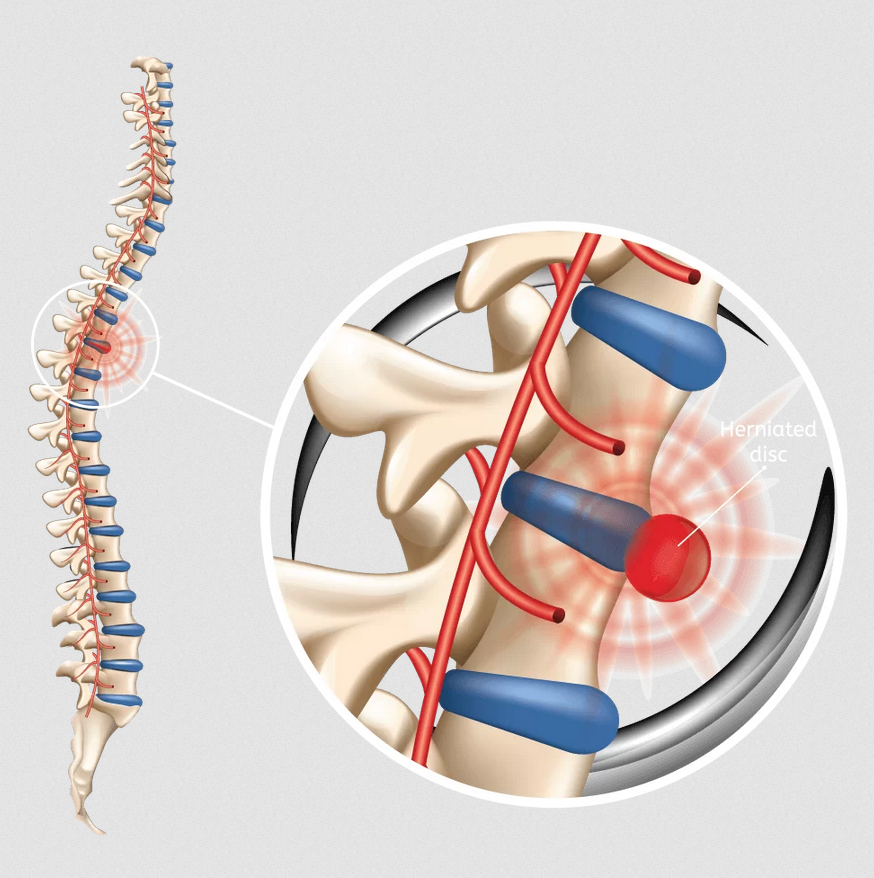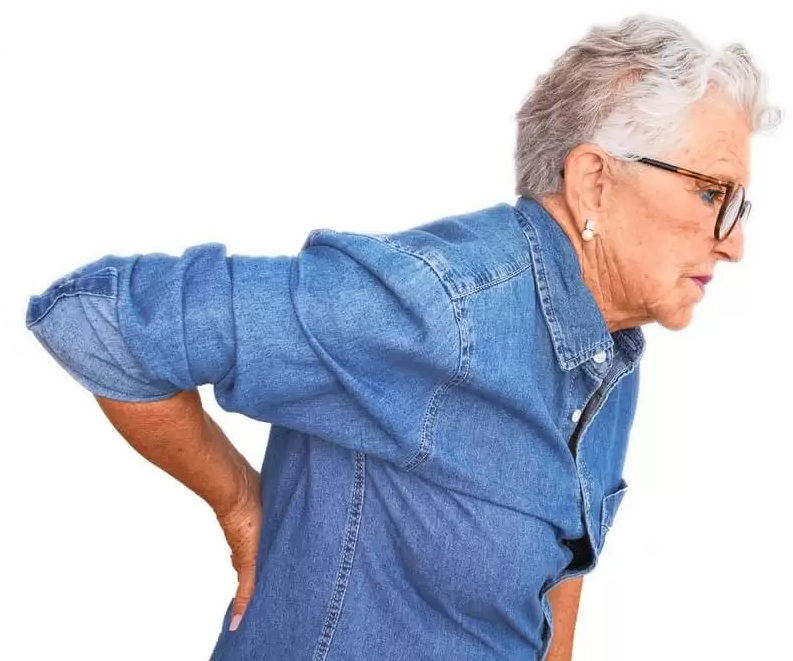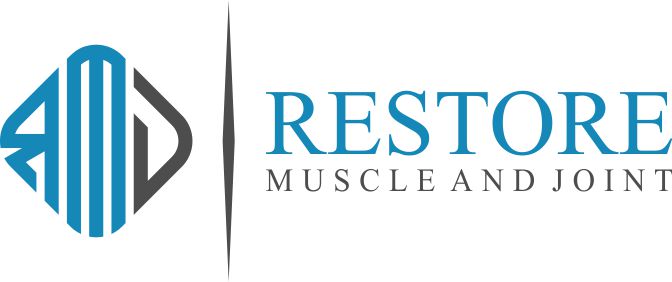Non Surgical Spinal Disc Decompression in the Kansas City Area
Patients across the country have found relief without surgery by choosing non-surgical spinal decompression and disc therapy with Restore Muscle and Joint.
THE SOLUTION IS HERE
We are pleased to share with you the non-surgical solution for a Herniated Disc, Ruptured Disc, Bulging Disc, Compressed Disc, Sciatica, Spinal Stenosis, or a Pinched Nerve. Spinal Decompression is a non-invasive and non-surgical treatment. We get AMAZING results with our comprehensive RESTORE WAY PROGRAM!
Why Our Disc Therapy Treatment Program is Different Than any Other Clinic in Kansas City
Don’t Let Sciatica Pain Hold You Back! Discover Lasting Relief with Our Non-Invasive Disc Decompression Therapy. Book Your Free Consultation Today and Start Your Journey to a Pain-Free Life!
Schedule Now
Don’t Let Sciatica Pain Hold You Back! Discover Lasting Relief with Our Non-Invasive Disc Decompression Therapy. Book Your Free Consultation Today and Start Your Journey to a Pain-Free Life!
Schedule Now
Herniated Discs
Herniated discs of all kinds can be treated without the use of surgery, whether you have herniated neck disc pain, herniated cervical disc pain, herniated back disc pain, or herniated lumbar disc pain. Submit your information below to see if you qualify for a non-surgical solution for your pinched nerve, herniated disc, or ruptured disc.
Ruptured Discs
Ruptured discs of all kinds can be treated without the use of surgery, whether you have ruptured neck disc pain, ruptured cervical disc pain, ruptured back disc pain, or ruptured lumbar disc pain. Submit your information below to see if you qualify for a non-surgical solution for your pinched nerve, herniated disc, or ruptured disc.
Pinched Nerves
Pinched nerves of all kinds can be treated without the use of surgery. Whether you have pinched nerves causing neck pain, pinched nerves causing cervical pain, pinched nerves causing back pain, pinched nerves causing lumbar pain, pinched nerves causing arm pain, or pinched nerves causing foot pain, there is a treatment that does not require surgery. If you have a pinched nerve, you can feel pain throughout the body, including the neck, back, arms, hips, legs, and feet. There are some exercises and remedies you can do to reduce the pain of a pinched nerve. But to avoid surgery, you must take more action. Submit your information below to see if you qualify for a non-surgical solution for your pinched nerve, herniated disc, or ruptured disc.
Spinal Stenosis
In most cases, these symptoms occur over time, increasing until they become debilitating. Advanced stages of spinal stenosis can result in neurological deficits including, but not limited to: pain, numbness, tingling, loss of motor control, and, in some cases of lumbar stenosis, incontinence. Spinal Stenosis is seen most often in patients over 45 years of age. People under 45 may develop Spinal Stenosis, which is generally a genetic issue that influences bone and muscle development. We recommend getting evaluated as soon as possible.


HOW IT WORKS
ASK YOURSELF THESE QUESTIONS
- Are you missing work due to pain?
- Are you dependent on medications to handle your pain?
- Are you slowed or stopped in daily activities due to your pain?
- Are you contemplating surgery but scared of the outcome?
- Are you worried that your pain is getting worse?
There are 3 components we will evaluate:
Structure Component
Your Spine
Neurological Component
Your Nervous System
Metabolic Component
Your Metabolic Health
By evaluating all areas one of our practitioners will be able to uncover your individual approach back to health and healing.
Frequently Asked Questions (FAQs):
1. What is Disc Decompression Therapy?
Answer: Disc Decompression Therapy is a non-surgical treatment option aimed at relieving back and neck pain. It involves stretching the spine using a traction table or similar motorized device to create negative pressure and space within the discs. This process helps promote the movement of water, oxygen, and nutrient-rich fluids into the discs, facilitating healing and providing relief from pain.
2. How Does Disc Decompression Therapy Work?
Answer: The therapy works by gently stretching the spine, changing the force and position of the spine. This change takes the pressure off the spinal discs, which are gel-like cushions between the bones in your spine, by creating negative pressure in the disc. As a result, bulging or herniated discs may retract, taking pressure off nerves and other structures in your spine. This helps to promote the movement of water, oxygen, and nutrient-rich fluids into the discs so they can heal.
3. Is Disc Decompression Therapy Safe?
Answer: Yes, Disc Decompression Therapy is a safe and effective treatment for many patients experiencing chronic back pain. Our skilled team of orthopedic, physical therapy, and chiropractic professionals ensures the highest safety standards are maintained during the therapy, making it a suitable option for individuals looking for a non-invasive pain relief solution.
4. What Conditions Does Disc Decompression Therapy Treat?
Answer: Disc Decompression Therapy is effective in treating conditions like bulging or herniated discs, degenerative disc disease, posterior facet syndrome, and sciatica. It is also beneficial for those suffering from chronic lower back pain and neck pain, providing a holistic solution to manage pain and improve mobility.
5. How Long Does a Disc Decompression Therapy Session Last?
Answer: Each therapy session typically lasts between 10 to 15 minutes. However, the duration can vary based on individual needs and treatment plans. Our approach is to provide personalized care, ensuring each session aligns with your specific health goals and conditions.
6. What Can I Expect During My First Disc Decompression Therapy Session?
Answer: In your first session, our team will conduct a thorough initial consultation, including a medical history review and physical examination. Based on this assessment, we will develop a personalized treatment plan. The session involves comfortable positioning on the decompression table, with gentle stretching of the spine under controlled conditions.
7. Are There Any Side Effects Associated with Disc Decompression Therapy?
Answer: Disc Decompression Therapy is generally a safe procedure with minimal side effects. Some patients might experience mild discomfort or soreness, similar to what one might feel after starting a new exercise regimen. Our team closely monitors each session to ensure patient comfort and safety.
8. How Many Sessions Will I Need for Effective Treatment?
Answer: The number of sessions required varies depending on the individual’s condition and response to treatment. Generally, a treatment plan may involve 12-24 sessions over a 5-8 week period. We evaluate progress continuously to ensure the treatment aligns with your recovery process and health goals.
9. Will Insurance Cover Disc Decompression Therapy?
Answer: Coverage for Disc Decompression Therapy varies by insurance provider. We recommend checking with your insurance company regarding coverage. Our team can assist you in understanding your healthcare benefits and exploring cost-effective treatment options.
10. How Does Disc Decompression Therapy Fit into Overall Wellness Plans?
Answer: Disc Decompression Therapy is an integral part of our holistic approach to wellness. It complements other treatments like chiropractic adjustments, physical therapy, and lifestyle modifications. This therapy plays a crucial role in achieving and maintaining long-term health goals by addressing the root cause of pain and promoting spinal health.
11. What Is Non-Surgical Spinal Decompression?
Answer: Non-surgical spinal decompression is a method used to treat spinal disc problems by gently stretching the spine. This technique relieves pressure on the spinal discs, allowing them to retract and heal naturally, providing effective relief for conditions such as herniated discs, degenerative disc disease, and more.
12. How Effective Is Spinal Disc Decompression?
Answer: Spinal disc decompression is highly effective for treating various disc-related conditions. Clinical studies have shown that patients experience significant pain relief and improved mobility after undergoing spinal disc decompression therapy. This non-invasive treatment is a viable alternative to surgery, offering long-lasting results for many patients.
13. Can Spinal Decompression Help with Slipped Disc Treatment?
Answer: Yes, spinal decompression is an effective slipped disc treatment. By reducing the pressure on the affected disc, spinal decompression helps the disc to heal and retract, alleviating pain and discomfort associated with slipped discs.
14. What Is the Difference Between Degenerated Disc Treatment and Degenerative Disc Treatment?
Answer: Degenerated disc treatment and degenerative disc treatment both focus on managing disc-related issues, but they address different stages of disc deterioration. Degenerated disc treatment is typically for discs that have already deteriorated significantly, while degenerative disc treatment aims to slow down or halt the progression of disc degeneration before it becomes severe. Both treatments often include spinal decompression as a key component to relieve pressure and promote healing.
